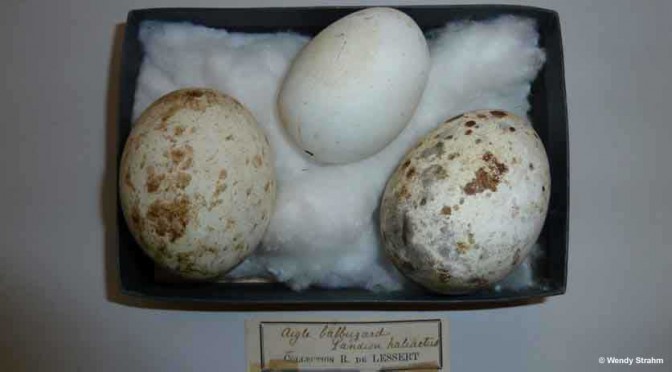Ospreys can start breeding at the age of 3 years (except for a few exceptional cases), with the average age of first breeding recorded at 3.8 years in France. The more territories that are available in the region where the birds were born, the earlier they start to breed. However, if the best nests are already occupied by other Ospreys, young adults prefer to delay breeding rather than go further afield to seek new territories elsewhere.
Ospreys usually lay 2 or 3 (although sometime 1 or 4) eggs. In general it is the male that fishes, bringing food back to the nest where the female feeds the chicks. If all goes well, in a good year a pair can raise three or even four chicks. However, if for example there is bad weather for a few days and the male cannot bring enough fish back to the nest, the female does not evenly distribute the fish to all the chicks. Although it seems unfair, it is the dominant chick (or chicks) that receive all the food. This leads to the third (and sometimes fourth) chick becoming a “runt” and dying. This is why in all Osprey reintroduction projects chicks are only taken from nests with three or four chicks. In doing so the two chicks that remain have a better chance of surviving, and the third (or third and fourth) chick also has a better chance of surviving in its new home.
More on breeding:
Ospreys usually lay their eggs between mid-April and the beginning of May (although egg laying has been recorded up until the end of May). The female lays her eggs usually at two day intervals, and the eggs are incubated for 35-37 days on average, usually hatching between mid-May and mid-June. The chicks stay in the nest for around 50-56 days and are brooded by both parents even if the female does the most. After the chicks take their first flight, they then spend 5-7 weeks exploring the area around the nest, first flying off for a few hundred metres and then progressively becoming bolder, going away for a kilometre or even more. At this stage they are fed by both parents, although the female tends to migrate earlier, leaving the male to care for the young until they leave for migration. While the young can try to fish for themselves, in practice they are almost completely fed by their parent(s) which is a better strategy for them than expending energy on trying to fish for themselves. This way they can leave for their long migration in the best condition possible.

